Once thought to dominate only the smaller capacity learner and commuter machinery, bikes from the Far East are now expanding into the upper realms of tourers, adventure bikes and sports nakeds…

Words: Dave Manning Photography: Gary Chapman
The move into larger capacity segments of the market was only a matter of time, and the comparison between the Japanese factories’ products of the late Sixties and early Seventies with the bikes now being launched by various Chinese manufacturers is clear to anyone old enough to remember the derogatory slights aimed at products from Nippon. And CFMOTO most certainly aren’t shy about coming forward with their new range of motorcycles – understated and reserved are not words that you’ll be reading in this feature (yeah, okay, just once).
The 800NK Advanced is the appropriately-monikered naked bike of the CFMOTO parallel twin range, powered by the 799cc version of their parallel twin engine. This is, as you may know, essentially the same engine that powers the KTM 790 Duke and 790 Adventure (actually a reworked version of the first iteration of the KTM lump, but very close to the latest 790), and it is a lovely example of how a mid-capacity parallel twin is a fun and engaging engine that is, in reality, more than enough for the crowded roads of the UK. Not only the engine, but also the main frame is shared with the Duke, while the bolt-on subframe is different, as are the suspension and braking components.
Enjoy everything MSL by reading the monthly magazine, Subscribe here.
But the biggest difference is, clearly, with the aesthetics. The 800NK is, without a doubt, striking in its looks, regardless of whether you like the styling or not. One wonders if the style will stand the test of time, or look dated quickly, but it is refreshingly different from other machinery currently being built, and while there are angular styling cues that bear resemblance to KTM products (hardly surprising since there has been the same styling house working on KTM and CFMOTO product development), the Chinese machine most definitely has its own style. While it’s angular, there’s something of an organic swoopiness to the style, while remaining tight and compact, with a feeling of being pared back to the minimum, as befits a naked machine. That said, it’s not short of spec or componentry…
At tickover and low revs, there’s seemingly no airbox noise, which is unusual for a modern parallel twin, with many engineered to give all their aural pleasure from the airbox, and it’s only above 5000rpm where the intake noise starts to become apparent. However, the NK’s soundtrack isn’t only derived from the noises that the airbox generates, and there’s a neat rumble from the exhaust on a closed throttle, and the quickshifter often creates a nice ‘pop’ from the high-level pipe on upshifts. That shift is a little heavier than other sportier bikes with quickshifters, but it works very well if you commit to the shift – but will occasionally cut the ignition but not shift gear if you’re a little too gentle, so it’s better to metaphorically ride in wellies rather than slippers… The ’shifter is also a blipper, too, so on downshift the throttle is electronically blipped to match revs, and it works very well. It’s only when you try to fool it (by changing up on a closed throttle, or down when accelerating) that it gets befuddled and slows the shift. But then that’s the case with most shifters, it’s only with bikes like the new-for-2024 Yamaha MT-09 that the more advanced shifter works in those cases.
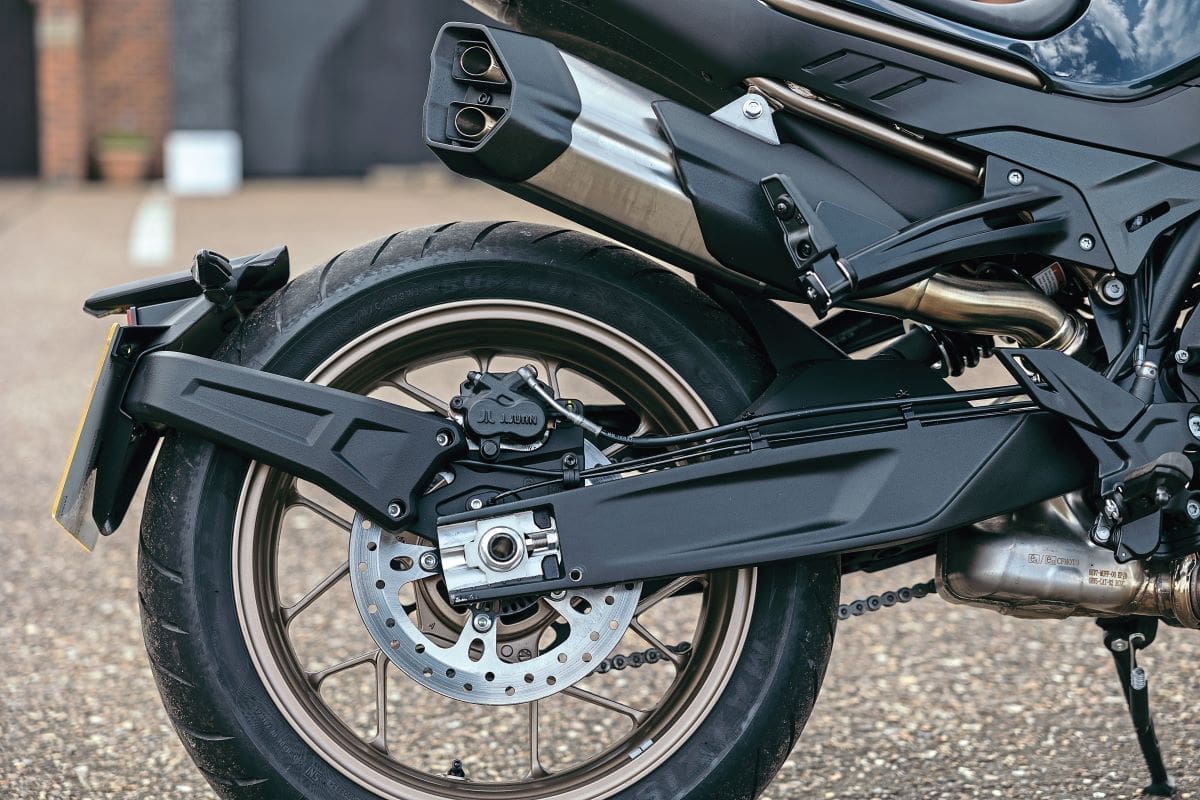
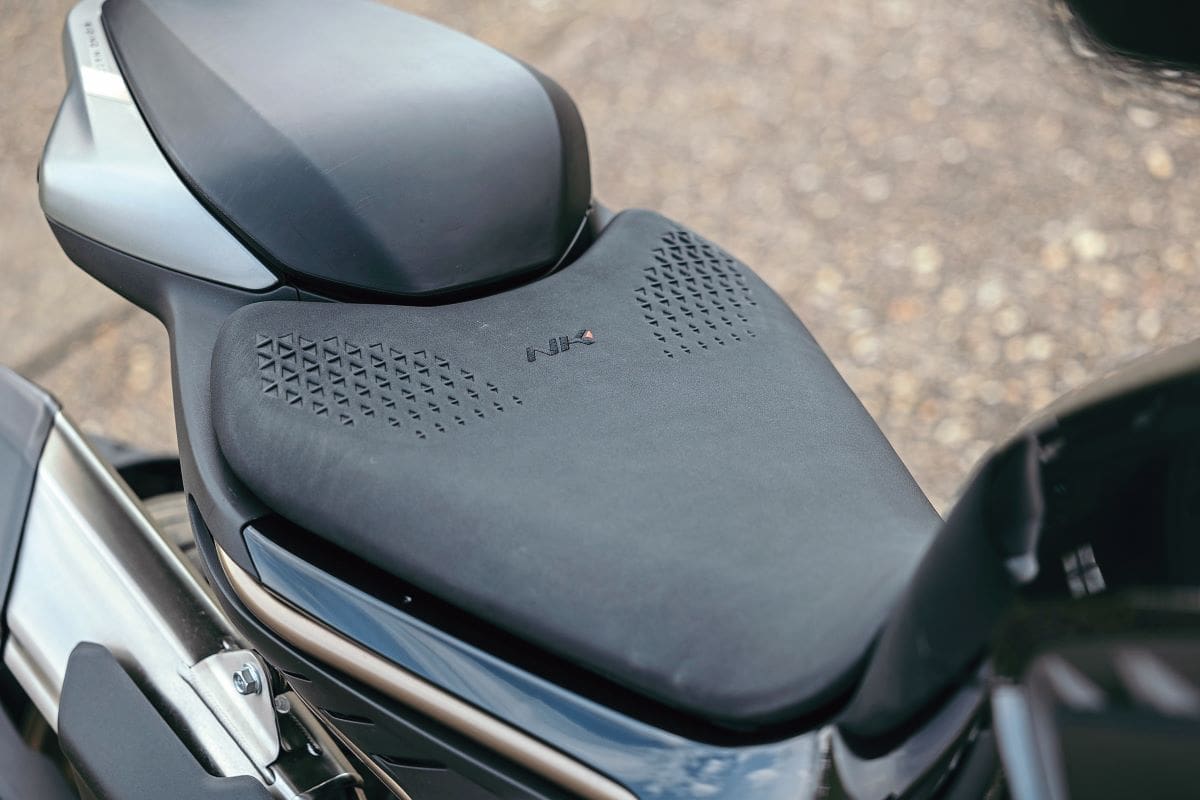
Like many other recent machines, hard braking induces the hazard lights to flash, which actually continues for a couple of seconds after you release the brakes, which is a bit odd when you first notice it. Also, when indicating, there are the sequential lights in the top yoke that light up (on the right of the yoke for the right-hand indicator, etc.), but these don’t light up when the brake-activated hazard lights do.
The NK’s fuel injection isn’t the smoothest, with a snatchy feel on a constant throttle, which is exacerbated by the quick-action throttle, and it could be improved with a bit more throttle movement for a road bike. As it is, I often found myself with the throttle right against the stop, and the last time I remember riding a bike that felt like I was hitting full throttle so often and for so long was an XSR125 three years ago. That said, it’s not slow by any means, it’s just that the short throttle action means that you hit the stop with very little actual throttle movement.
The suspension does feel a little harsh, as though the damping is too severe, or maybe has too heavy an oil as it seems not quite plush enough to even out smaller bumps. This may be a simple reflection of the type of Lincolnshire back roads that I happened to choose, while experience suggests that this may ease a tad with a few more miles under the 800’s belt (this bike had very few miles on the clock).
All in, it’s quite an aggressive power delivery (well, an aggressive throttle action), allied to punchy power from the parallel twin, especially when above 5000rpm (but marginally softer than the equivalent KTM), which, combined with the riding position, gives a feeling of a naked sportsbike – what was once referred to as being a ‘factory streetfighter’ – and the hard suspension and impressive brakes only add to that feeling. But it is something of an anachronism in that the 800NK has an interesting level of electronic aids, including cruise control (but not heated grips). There are three rider modes – Sport, Street and Rain – and it’s only in the Rain mode that the sharp throttle response seems to ease, although the mode change is refreshingly easy, being undertaken on the move with a simple button push. I have wondered why some manufacturers insist on the modes only being changeable at a stop, when the nature of a bike is that you’ll invariably be on the move when you want to change the mode…
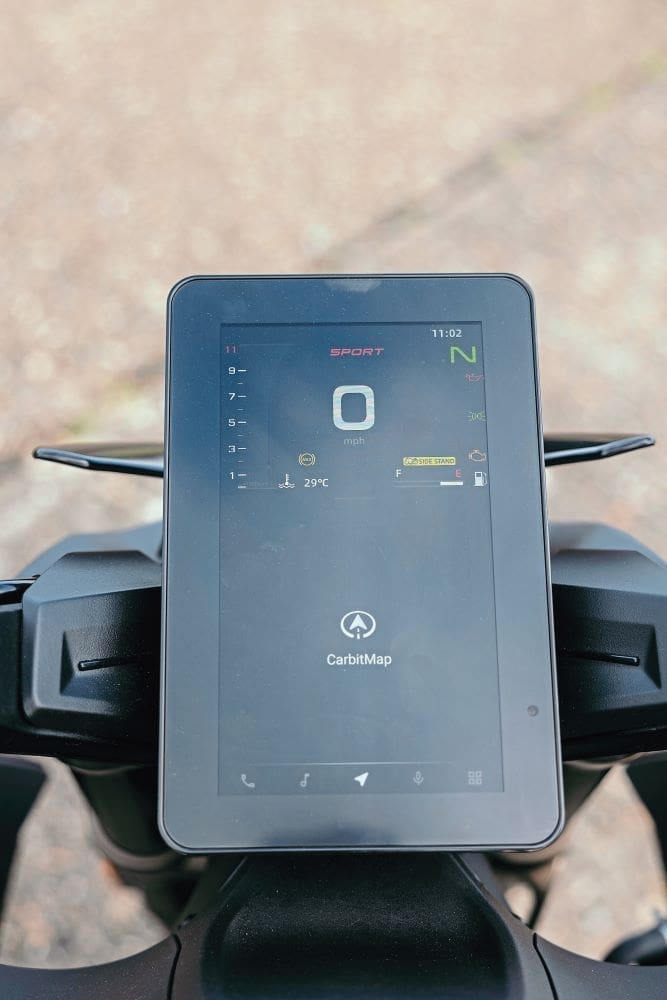
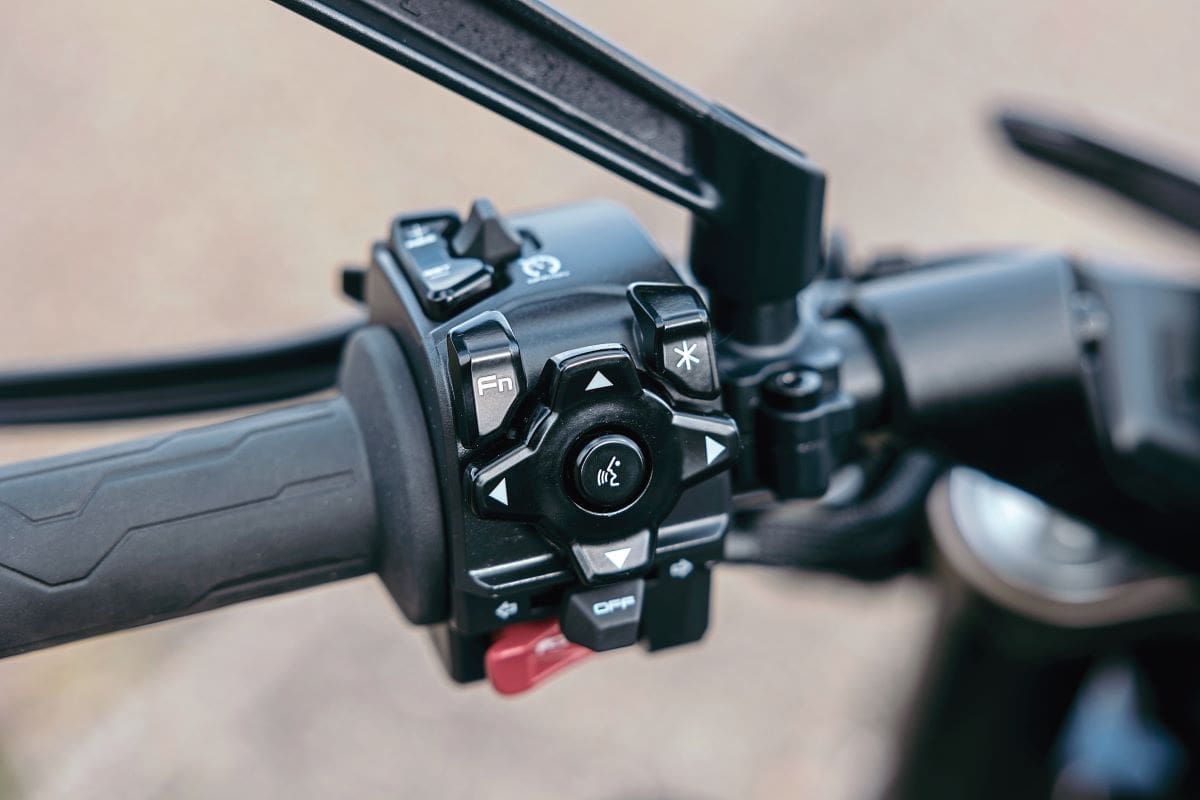
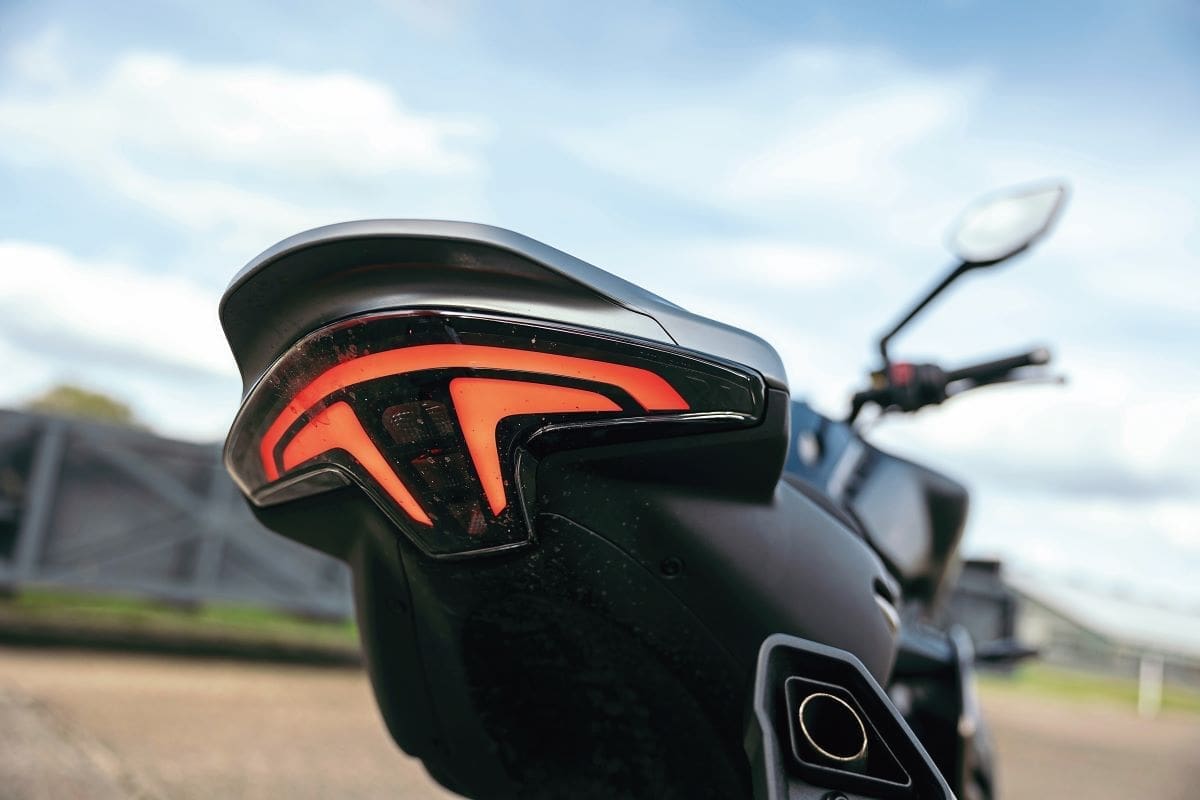
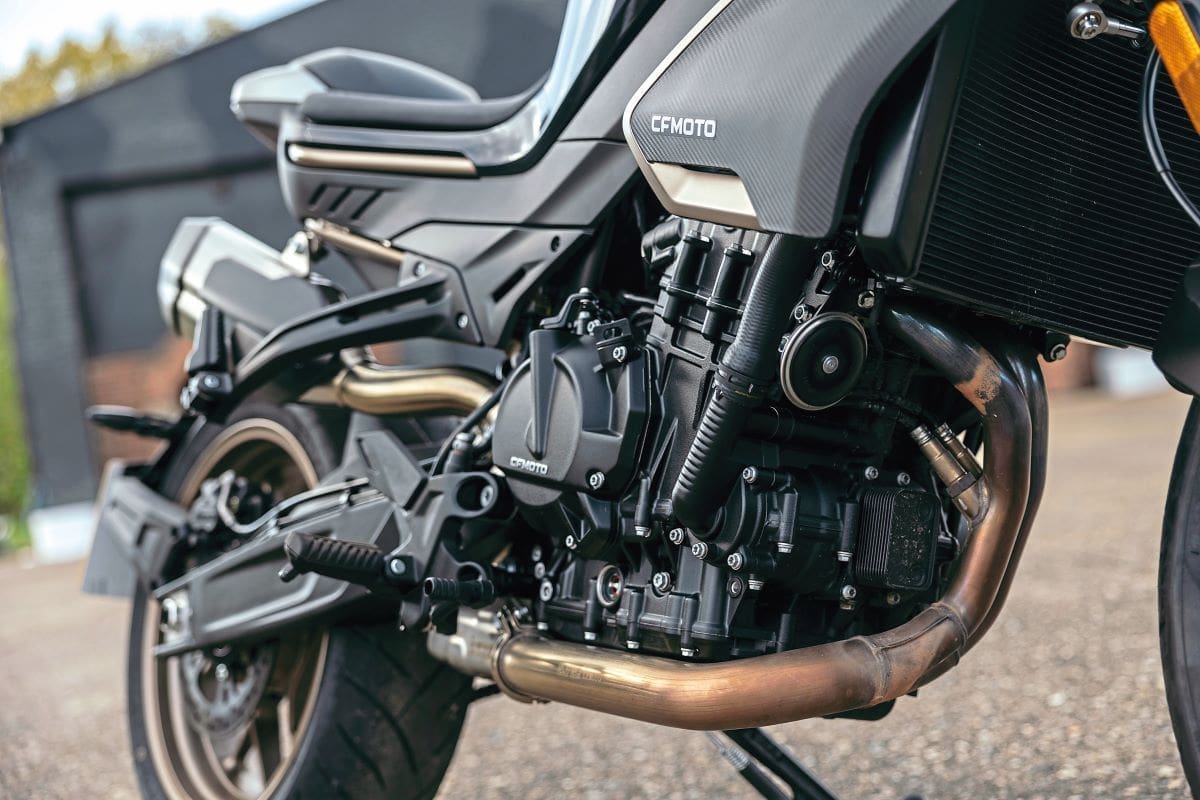
The big portrait format dash – and that’s big as in ‘someone’s bolted an iPad to your bike’ big – is quite imposing, but tucked away as best as it can be. Thanks to its size, it can display not only the normal functions of speed, revs, fuel level, etc. (yet I couldn’t fathom out how to show a trip or odometer), but also the entertainment side of a tablet, too, that being music, phone connectivity, navigation, etc. I’d go as far as to say the dual display of normal functions and navigation being on show together is brilliant as, more often than not, those bikes that can have navigation displayed on their dash often over-prioritise the navigation against basic necessities (speedo, trip, fuel and rev counter). But of course, what with me being something of a technological throwback (remember how I said how pleasing the plain speedo and rev counter were on the Norton Commando?), I will never use all of the options that the CFMOTO offers and would go as far as to say that they’re now at the level that they become a distraction. That’s partly because my analogue brain can’t cope with multiple digital inputs, but I do wonder if it is a step too far, and moves away from the pure joy of just riding a motorcycle? Who needs anything extra (phone interruptions, audible email, etc.) when the act of riding is, surely, enough?
Technological advances are also present when you come to start the bike. Yes, another answer to a question that no one asked… it’s keyless. Except that it isn’t, not really, as you need the key to open the fuel cap. So why not have a convenient and accessible place to store that key for the fuel cap while you’re riding. Like, say, in an ignition switch… Much like just about every other bike I’ve ridden that has keyless ignition, it is a right royal pain in the posterior. Sometimes it works immediately. Sometimes it doesn’t. When it doesn’t is when lots of people are watching/when you’re in a rush/when you want to demonstrate the impressive dash, etc.
All of that said, when you’re actually riding it, it is rather impressive. The ergonomics are perfect for my height; the handling is pleasingly neutral (providing the Tarmac is in reasonable condition); the power delivery is exhilarating; and the brakes are effective. Quality of finish can only really be tested by covering the miles in all manner of conditions (i.e. a British winter really shows if a bike remains corrosion-free), although the finish on the CFMOTO seems to be of a level that matches most other major manufacturers, and the four-year warranty is very reassuring. And, while the pricing of £7499 is pretty impressive, there is currently (it now being the end of August 2024) a reduction in pricing and the Advanced is available at an astounding £6799, which is an incredible £1200 less than a KTM 790 Duke. There is also the lower-priced version of the NK, the Sport, which has a smaller TFT dash, and doesn’t have the quickshifter, cruise control or remote key, and has a retail of £6999 (currently reduced to £5999).
My final comment regards the text on the tail unit: ‘Riding machine’. Er, yes. Is there something else that we were expected to use it for?…

Specification
Make and Model: CFMOTO 800NK Advanced
Price: £6999 (£5999 at time of writing)
Engine: 799cc, parallel twin, water-cooled, DOHC
Power: 94bhp (70kW) @ 9250rpm
Torque: 58.2lb-ft (79Nm) @ 8000rpm
Frame: Tubular steel main frame, bolt-on steel subframe
Wheelbase: 1468mm
Rider aids: Cruise control, Bosch ABS, Sport, Street & Rain modes
Brakes: (F) Twin 320mm discs, four piston radial J.Juan calipers. (R) 260mm disc, twin piston J.Juan caliper
Transmission: 6 gears & chain final drive
Suspension: Fully adjustable KYB forks, 130mm travel (R). Fully adjustable KYB shock, 130mm travel
Wheels/Tyres: (F) 3.15×17” cast aluminium wheel, Maxxis 120/60ZR17 tyre. (R) 4.5×17” cast aluminium wheel, Maxxis 180/55ZR17 tyre
Seat height: 795mm (optional 820mm)
Fuel capacity: 15 litres
MPG: 55mpg (tested)
Weight: 186kg (dry)
Warranty: 4 years
Roadside assistance: 12 months European breakdown cover
Contact: www.cfmoto-motorcycl.eu/uk







